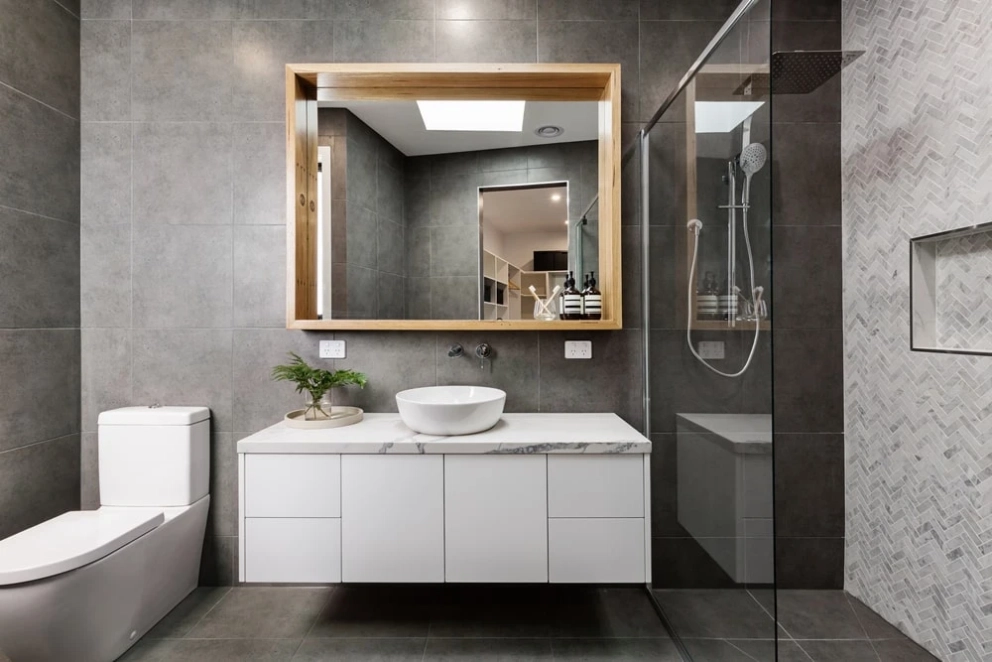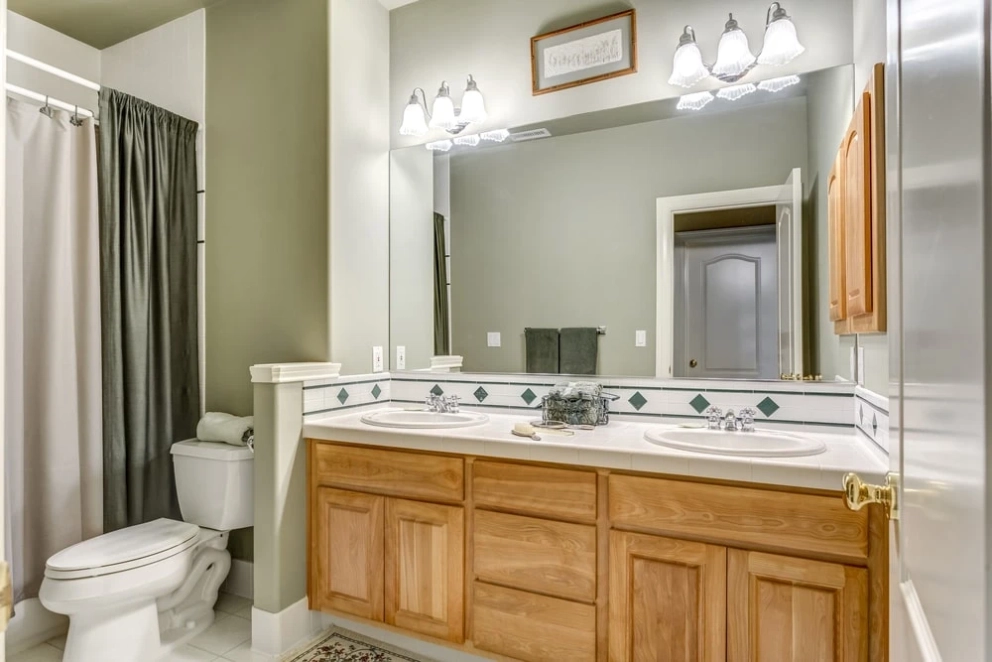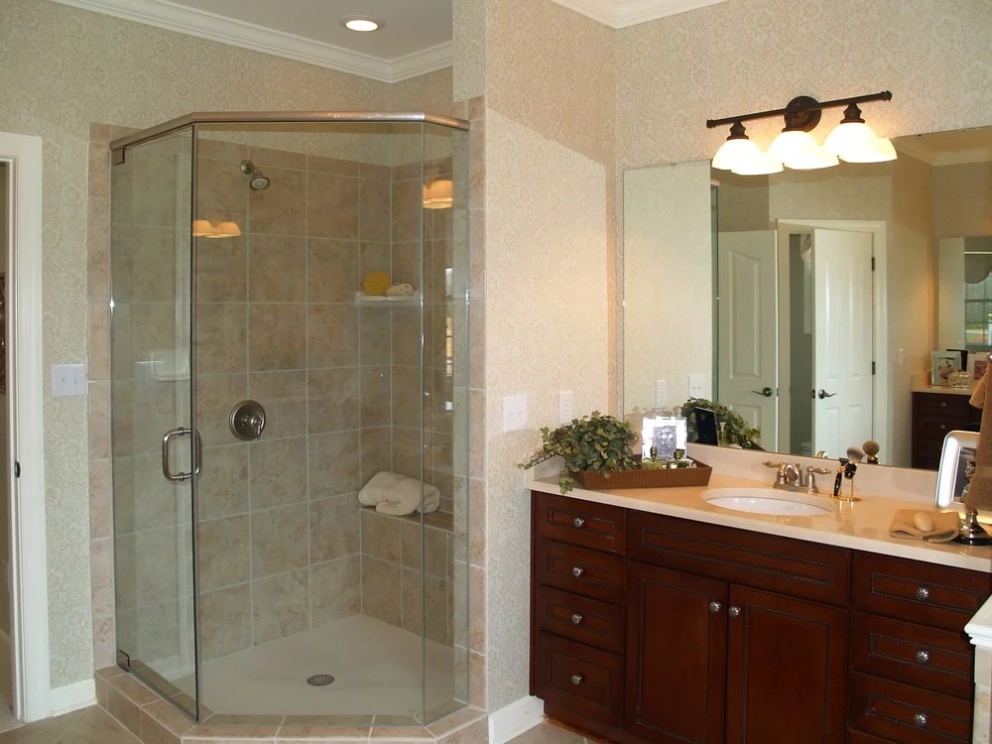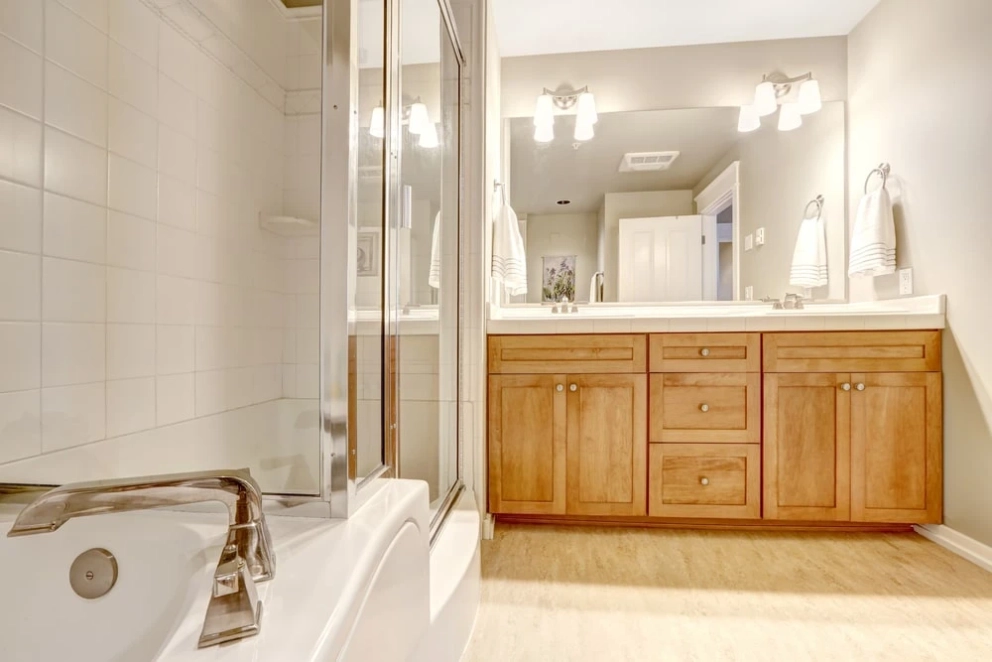Bathroom Vanity Ideas. Find A Vanity Design That Fits Your Bathroom

What is a vanity in the bathroom? Many people think that a sink and a vanity are the same. Technically, both have differences. For example, there are various types of sinks such as pedestal sinks, corner sinks, and floating sinks. Vanities on the other hand are considered a pieces of furniture wherein a sink is integrated into a cabinet or storage. The cabinet serves as the façade that conceals the plumbing systems of the sink underneath. Vanities are common in traditional homes like Victorian, Georgian, and many other Regency types of interior design. When you hear someone ask what is a vanity in a bathroom, you can say that it is a much more decorative way of putting up a sink and making a bathroom look aesthetically charming and beautiful.
Now we know that vanities are great features to have in a bathroom. But with the thousands of vanity designs out there, picking the right style that would fit perfectly in your bathroom becomes a challenge. How do you actually pick the best style of vanity? Read more to find out!
How To Choose A Bathroom Vanity

Choosing a bathroom vanity requires a thorough understanding of how vanities operate, what’s their function, what size they should be, where to put them, and how they should be designed. Keep in mind that vanity manufacturers differ depending on which country they are from.
Don’t forget this especially when you are shopping for a pre-fabricated vanity online. If you are in Canada for example, the quality and price of vanities are different from those vanities that are made in China or Japan. So, how to choose a bathroom vanity in Canada? Take a look at some of the basic types of vanity below.
- For a small space, go for a small bathroom vanity.
A small bathroom vanity as the name implies is basically a small vanity designed to fit smaller spaces. This only has 1 sink, and its plumbing system is concealed under a cabinet with one or two doors and a drawer. small bathroom vanities are available in prefab. They are easy to install and are pretty much considered a good option for people residing in small apartments or condo units.
- If you need more storage but have limited space, choose a narrow bathroom vanity.
This type of vanity is ideal for small bathrooms. One of the reasons why people choose not to have a vanity area in their bathrooms is that there’s just no room for it. Squeezing one would narrow the space even more. But what most people don’t know is that there is a vanity that is designed to fit in smaller spaces. These are narrow vanities. Narrow vanities have a smaller width size of approximately 18 inches and are longer in length. Because they are longer in length, it can actually be a double sink bathroom vanity. This shape can fit in a small space but still provides enough counter space and storage.
- For tiny bathrooms like in condo units and apartments, a corner bathroom vanity is ideal.
Corner vanities are an easy option to cover a gap or maximize space in your bathroom or washroom. Corner bathroom vanity types are the ideal way to acquire the most enclosed cabinet space while occupying the least amount of floor space possible. This is a great way to maximize storage areas and get rid of dead spaces in a room, bathroom, or even kitchen.
- If you’re unsure what style to choose, you can never go wrong with a modern bathroom vanity.
People love everything that is new, trendy, and unique. When we say bathroom vanities, the first thing that people would think of is old Victorian sinks made of wood and have ornate details. Some people prefer this traditional style while others are more into the sleek and clean geometry of contemporary designs.
- If you want an eclectic appeal, pick a rustic bathroom vanity.
Solid wood is the greatest material for bathroom vanity with sinks. Its durability cannot be compared to that of any other material. It does a good job of controlling humidity and is one of the most sought-after materials for bathroom vanities. A wooden bathroom vanity is your best option if you want to create a rustic feel in your bathroom. It has the same functions as a modern vanity, apart from maybe the aesthetic. The charm of salvaged wood is evident in a rustic bathroom vanity. Distressed wood's flaws contribute significantly to the rustic look.
Types Of Bathroom Vanity Cabinets

There are several different types of bathroom vanity cabinets. Let's consider the most common of them to decide which types of bathroom vanity cabinets will look best in your bathroom:
- Bathroom pedestal vanity
In recent years, bathroom vanity pedestal sinks have made a tremendous resurgence. What was formerly considered merely a historic item is now being utilized in current and contemporary design. A pedestal sink is also known as a free-standing bathroom vanity. It is made up of two parts: the leg on which it sits and the sink basin, which combine to make this classic item. If you prefer to have a larger vanity worktop, you can pick a free-standing double-sink bathroom vanity that has two sinks that are connected and supported by two pedestals.
- Floating bathroom vanity
Small bathroom floating vanity is a popular new trend that combines aesthetics and functionality. They come in a variety of forms and finishes, and they come with a number of advantages. Examples of floating bathroom vanities are floating glass bathroom vanities, floating wood vanity for the bathroom, and floating concrete bathroom vanities.
- Bathroom vanity with vessel sink
Because of their size and appearance, vessel bathroom sink vanity is exclusively seen in bathrooms, not kitchens. Bathroom vanity for a vessel sink is more commonly seen in aesthetic bathrooms, such as powder rooms or guest bathrooms, where they are rarely used.
- Bathroom vanity with under-mounted sink
A sink that is positioned beneath a countertop in a bathroom vanity or other space is known as an under-sink bathroom vanity. Drop-in sinks are attached to the counter's top.
- Bathroom vanity cabinet
Bathroom cabinet vanity varies in size and price from tiny, affordable cabinets with a single sink to large, pricey cabinets with a double sink and countertop.
How To Choose The Right Size Bathroom Vanity

Bathroom vanity cabinets come in different shapes, styles, and sizes. Choosing the right style is important but choosing the right vanity size is even more important. You should know how to measure a bathroom vanity so you will know what vanity size you should purchase. Bathroom vanities are expensive and are considered an investment. Therefore, when buying one, check the bathroom vanity dimensions and what is the size of a bathroom vanity that would fit in your bathroom.
How High Is A Bathroom Vanity?
If you are wondering what is the standard height for a bathroom vanity is, the answer would depend on who typically uses the vanity. In any conventional or free-standing form, the normal bathroom vanity height is 31 to 35-1/2′′. Countertops may reach heights of 36" or more, depending on their width. Small children benefit from shorter vanities, but taller adults may prefer a taller worktop.
How Deep Is A Bathroom Vanity?
How deep is the average bathroom vanity can be determined by the amount of space available in your bathroom to install one. The normal bathroom vanity depth is 21 inches; however, it can vary between 17 and 24 inches. Cutting at least a portion of the vanity to 18, 15, or even 12 inches deep can give you more floor space in a tiny bathroom.
How Wide Is A Bathroom Vanity?
What is the width of a bathroom vanity? How wide is a double bathroom vanity may be influenced by the amount of worktop you want to have for a sink of your choice. Standard vanity cabinet widths are 24, 30, 36, 48, 60, and 72 inches, however, there are other options in between. A vanity's usual depth is 20 to 21 inches from front to back. There are, however, 18-inch-deep variants available.
Bathroom vanity standard sizes:
| Type | Height | Depth | Width |
| Freestanding | 30” – 32” | 17“- 24” | 36” – 46” |
| Small vanity | 30” | 17” | 12” – 24” |
| Comfort vanity | 36” | 24” | 59” |
Best Countertop For Bathroom Vanity
We are done with the cabinets, styles, types of vanities, and sizes. Let’s now move on to the countertops which is another important element of a vanity’s design. There are many countertop materials available on the market but not all are ideal for vanity. so, what is the best bathroom vanity countertop?
First, let’s look at what are bathroom vanity tops made of. They are typically made of natural stone such as quartz countertop bathroom vanity, marble, granite, and other engineered stone materials. However, a bathroom vanity quartz countertop is the most popular among homeowners. Why? Quartz is a remarkably durable material that requires very little upkeep to withstand the pressures of regular use. Quartz vanity tops are virtually stain-proof and never require sealing due to the resins used in the production process.
A wood countertop bathroom vanity is also a top choice. The beauty of a bathroom vanity wood countertop is the main reason why people select them. They add warmth to any kitchen that no other countertop material can match.
Another good material is a granite countertop bathroom vanity. Granite countertops are 100% made of natural material, extremely durable, and have a very versatile design that can be paired with pretty much any kind of interior design style.
Lastly, we have a concrete countertop bathroom vanity. Concrete worktops are popular in kitchens, baths, and outdoor gathering spaces, as well as restaurants and bars since they are entirely customizable. Concrete countertops are both practical and beautiful, as well as being naturally durable and easy to clean.
Bathroom Vanity Backsplash Ideas
Whether you prefer to have a bathroom vanity backsplash or not, it is unarguable that a bathroom vanity composition is not complete without a backsplash. A bathroom vanity with a backsplash can make a huge difference. The only challenge though is how to add a backsplash to the bathroom vanity that will complement or match the style of your vanity furniture. Here are a few backsplash ideas for bathroom vanity you can start with.
- Mosaic Tile
A bathroom vanity with a tile backsplash is a common scene in many homes. Some people find it too overrated because it is widely used. However, there is a unique way to incorporate tile without making your backsplash look ordinary. Opt for a bathroom vanity mosaic tile backsplash! Create wonderful patterns to make it interesting.
- Subway Tile
A bathroom vanity subway tile backsplash is a popular choice for kitchens and bathrooms. Subway tiles are inexpensive, easy to clean, endlessly customizable, and possibly the most ageless solution on the planet—they never appear to date, no matter what setting they're in.
- Granite
Granite is one of the most popular backsplash materials for kitchens, whether it's a little 4-inch backsplash or a full-height backsplash that extends all the way to the cabinets. If your countertop is made of granite and you have an excess cut, you can use it as your granite backsplash for the bathroom vanity.
- Glass Tile
A glass tile backsplash bathroom vanity has a non-porous characteristic and is stain-resistant, glass tiles are suitable for use as a kitchen backsplash. This also implies it won't be a breeding ground for bacteria.


